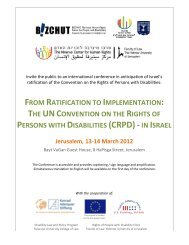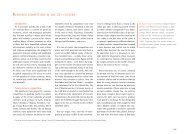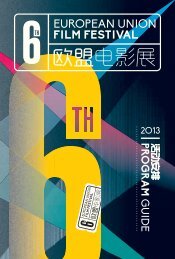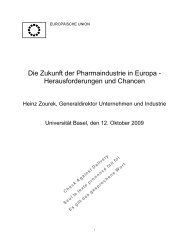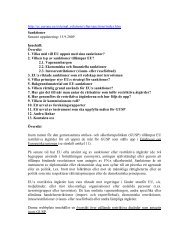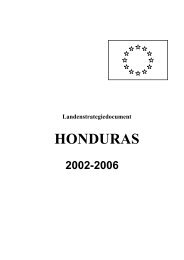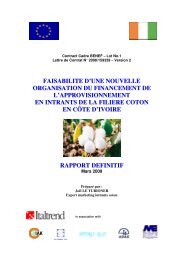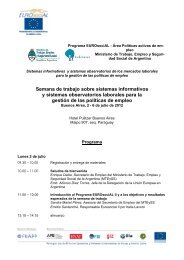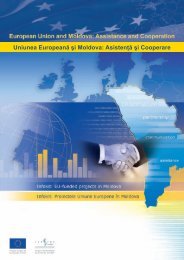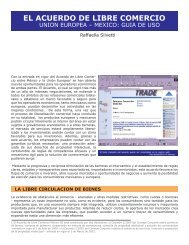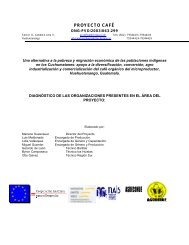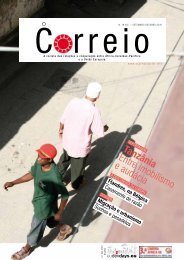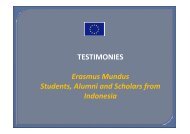Regional Reports - the European External Action Service
Regional Reports - the European External Action Service
Regional Reports - the European External Action Service
Create successful ePaper yourself
Turn your PDF publications into a flip-book with our unique Google optimized e-Paper software.
Source: Based on FSPC&DPP Office Data<br />
4.3. Zonal Distribution of Ongoing Projects<br />
In terms of NGO distribution intensity North Shoa zone stands first, and is followed by South<br />
Wollo. Table 6, below presents <strong>the</strong> distribution of projects and pledged financial values across<br />
zones of <strong>the</strong> region. When it comes to resource allocation, North Shoa, South Gonder and North<br />
Wollo are <strong>the</strong> relatively best-served zones, and Awi, Oromia and East Gojjam are on <strong>the</strong> opposite<br />
end. The distribution is consistent with <strong>the</strong> established pattern of more NGO presence in droughtprone<br />
and food-insecure parts of <strong>the</strong> country.<br />
Table 6 - Zonal distribution of NGO projects<br />
No of No of Total Project Project<br />
S/No Admin. Zones NGO's Projects Budget in Birr Beneficiaries<br />
1 North Shoa 34 61 409,802,222 1,679,715<br />
2 South Gonder 16 38 284,696,519 2,708,867<br />
3 North Wollo 22 45 241,278,532 1,682,742<br />
4 North Gonder 24 29 224,405,272 2,181,911<br />
5 South Wollo 30 51 175,937,847 1,799,858<br />
6 Waghimra 6 9 156,459,576 907,359<br />
7 Region-wide 11 15 104,085,232 10,186,665<br />
8 West Gojjam 10 14 79,526,871 919,524<br />
9 Bahir Dar 22 31 77,959,344 647,933<br />
10 East Gojjam 11 16 59,547,462<br />
11 Oromia 4 4 55,970,927 618,832<br />
12 Awi 4 4 12,209,022 532,284<br />
Total 317 1,881,878,826<br />
Source <strong>Regional</strong> FSPC&DPO<br />
4.4. Sectoral Participation<br />
The data from <strong>the</strong> regional food security programme coordination and disaster prevention Office<br />
points that <strong>the</strong> larger share of programme resources is dedicated to <strong>the</strong> food security and disaster<br />
prevention work in rural areas. Table 7 below shows <strong>the</strong> disaggregated sectoral allocation. About<br />
50% of <strong>the</strong> resource is tied to implementing integrated or specialized rural development projects.<br />
Support to child development and provision of alternative basic education is <strong>the</strong> second distinct<br />
participation area in terms of resource allocation. The various health sector activities including<br />
HIV/AIDS, reproductive health, nutrition, and o<strong>the</strong>r preventive health education against trachoma<br />
and communicable diseases are <strong>the</strong> third important participation areas.<br />
The clustering of sectoral programmes, below, is simply an attempt to shed light on <strong>the</strong> major<br />
focuses of ongoing projects. O<strong>the</strong>rwise, <strong>the</strong> study team is aware that <strong>the</strong>re is an overlap and<br />
integration of activities in each o<strong>the</strong>r. For example, most of <strong>the</strong> integrated rural development<br />
programmes have components on education, HIV/AIDS, potable water development and<br />
environmental protection. Because of such configuration of projects and programmes, it can be<br />
said that, agriculture, education, health water development and environment are <strong>the</strong> core priorities<br />
of NGOs in <strong>the</strong> region.<br />
As a new development, <strong>the</strong> survey found some unique types of NGO projects that are best<br />
described as advocacy and good governance focused interventions. The woreda capacity building<br />
for responsive planning & service delivery (SC/UK), <strong>the</strong> South Wollo Good Governance<br />
Programme (HELVETAS - Ethiopia), <strong>the</strong> capacity building training for <strong>the</strong> social court judges as<br />
a means to enhancing <strong>the</strong> rule of law (AARDR), <strong>the</strong> Older Citizens Basic <strong>Service</strong> Delivery<br />
Monitoring Project (WSA) and Child Rights Committee streng<strong>the</strong>ning engagements (ANPPCAN,<br />
FSCE and PADET) are some of <strong>the</strong> examples in this regard. Through such projects <strong>the</strong> respective<br />
113




